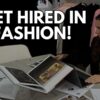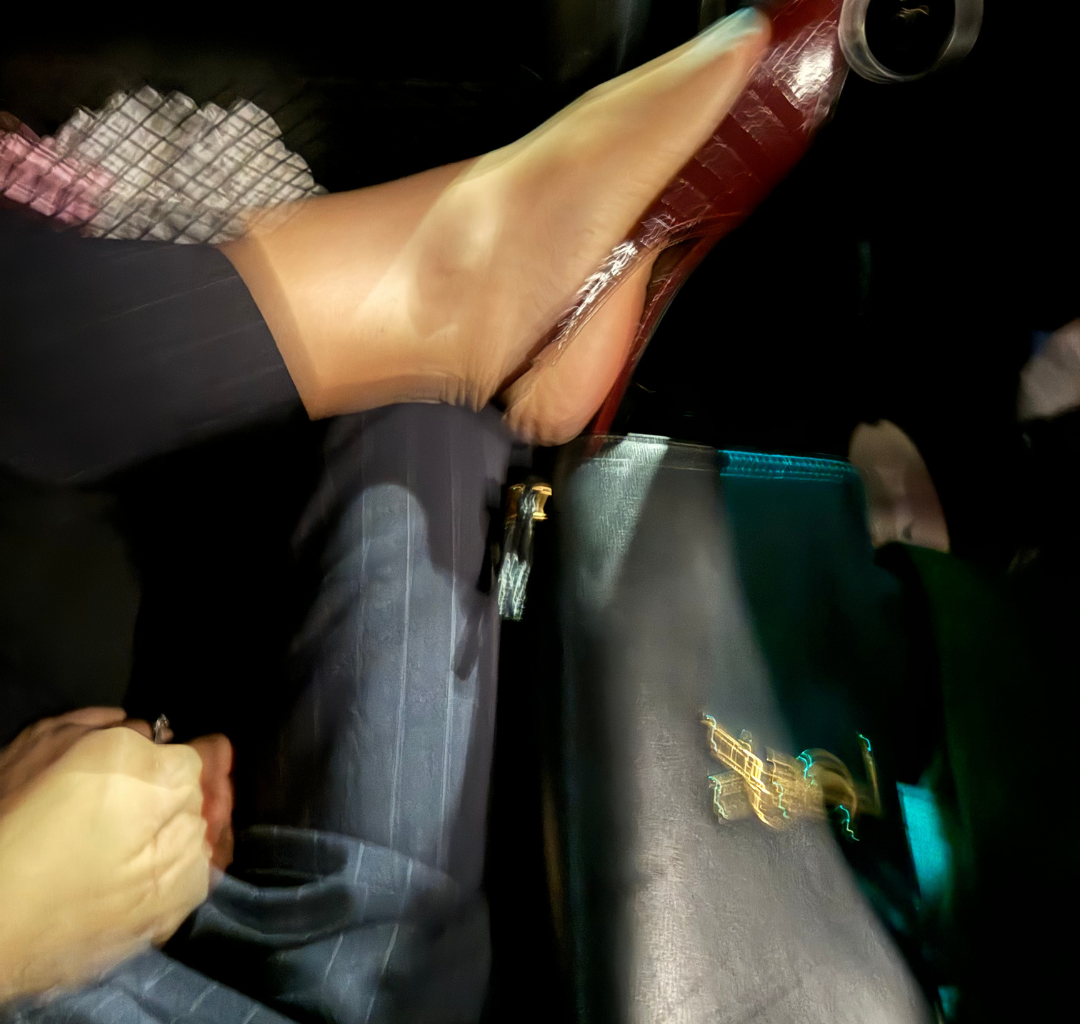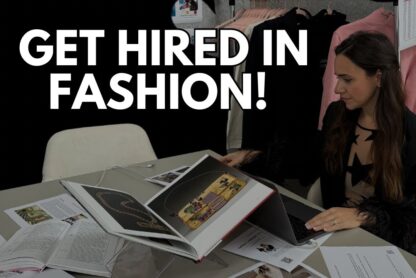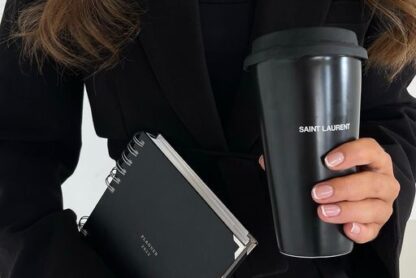Watch my video on YouTube with 6 proven strategies that will help you break into the fashion industry—even if you have NO experience!
Or you can read this article instead.
I’ve been a fashion career coach for years, and predicting how hiring processes evolve is a bit like trend forecasting. It’s not about guesswork or intuition alone; it’s about paying close attention to shifts in the industry, analyzing job postings, and having conversations with professionals in the field. Just like we spot new trends each season, we can predict emerging hiring trends, too!
This year, I’ve had the privilege of diving deep into the fashion industry—analyzing hundreds of job offers, listening to all of the job application struggles and wins with my Academy students during Zoom calls, and meeting many of you in person at my Inside the Fashion Offices Exhibition. I also attended some incredible industry events, like the Altagamma conference in Milan, where luxury fashion’s future was a major topic of discussion from the CEO of companies such as Prada and Dolce & Gabbana. All of these experiences have helped me spot some key patterns shaping the hiring landscape in 2025.
The fashion industry is dynamic and constantly evolving, and so are the hiring practices within it. From big luxury houses to rising independent brands, companies are rethinking how they recruit and onboard talent to address global shifts like sustainability, digital transformation, and changing consumer behaviors.
If you’re ready to land your dream fashion job next year, here are my top predictions and tips to help you stay ahead of the game.
How To Get A Job In Fashion In 2025
1. Tailor Your Application for AI Hiring Tools
In 2025, AI is expected to play a more significant role in the recruitment process, especially in luxury fashion companies, which have started integrating AI for tasks such as candidate screening and initial assessments. This shift is part of a broader trend where talent acquisition is moving towards tech-driven methods, with companies increasingly using AI to enhance efficiency, reduce bias, and speed up the hiring process. AI tools now automate initial stages like resume scanning, screening, and psychometric testing.
At LinkedIn’s Talent Connect 2024, CEO Ryan Roslansky unveiled the LinkedIn Hiring Assistant, an AI-driven tool designed to handle repetitive recruitment tasks like intake, candidate screening, and outreach. Some companies are also implementing AI chatbots to conduct preliminary interviews, providing a faster way to assess whether candidates meet the necessary criteria before progressing further in the hiring process.
Don’t panic! This doesn’t mean landing your dream role is now impossible. As with any challenge, complaining won’t help—you need to acknowledge the situation and prepare. Understanding how the industry works actually gives you a significant advantage in navigating the application process successfully.
2. Personalize your applications
With AI platforms scanning resumes, the days of one-size-fits-all CVs are long gone. I’ve always emphasized the importance of tailoring your CV by incorporating relevant skills and keywords from the job description. Even before AI, applicant tracking systems (ATS) were already scanning resumes, so this step remains crucial.
Fashion recruiters are placing more emphasis on personalized applications that closely align with specific company missions and roles. Generic cover letters and resumes no longer cut it, even when AI isn’t involved. Brands want candidates who demonstrate a deep understanding of their ethos.
Advice:
- Customize every application you send out.
- Showcase your knowledge of the brand—whether it’s through their sustainability efforts, aesthetic, or market position.
- Research the brand: Demonstrating knowledge of the brand’s history, values, and latest collections is crucial. Recruiters value candidates who can discuss how recent campaigns or designs inspired them. Stay informed about current industry trends, including sustainability and digital innovations.
3. A Spike in AI Usage Across Fashion Jobs
Luxury brands have long used AI for operational tasks like demand forecasting and supply chain management. However, the emergence of generative AI (GenAI) marks a transformative shift. Unlike traditional AI, which analyzes data and identifies patterns, GenAI creates new content across formats like text, images, and videos, mimicking human creativity—but without contextual understanding or a moral compass.
LVMH, the luxury conglomerate home of some of the best fashion houses such as Dior, Louis Vuitton and Fendi, is pioneering responsible GenAI integration. It hosted the LVMH Data AI Summit and partnered with Stanford University’s Human-Centered AI Institute to explore AI’s potential in enhancing creativity and customer experience while maintaining authenticity and trust. Applications range from bespoke designs and personalized experiences to operational improvements across its 75 Maisons.
LVMH emphasizes using AI as a complement to human talent, ensuring it enhances creativity and operations without overshadowing the personal touch central to luxury.
Advice:
- Familiarize yourself with AI tools like Adobe’s AI-driven Creative Cloud or ChatGPT. Even basic knowledge of how AI integrates into design or marketing projects gives you a competitive edge.
- If you’re in creative roles, experiment with generative AI to expand your portfolio and show recruiters your adaptability.
Exciting News: I’m developing a new course on AI applications in the fashion industry, set to launch in 2025—if there’s enough interest! AI is the future, and it’s essential that we stay ahead of the curve.
Many of you have asked whether AI will replace fashion jobs. My perspective? It’s smarter to embrace these tools and use them to your advantage, making you more efficient and effective in your role. Plus, AI can be incredibly helpful in the job search process!
I want to ensure you’re fully prepared for the evolving industry, so if this topic interests you, let me know by signing up for the waitlist here. Your input will guide the creation of this exciting course. Let’s shape the future of fashion together!
4.A Shift in Demand for Digital Skills
Fashion employers increasingly value candidates proficient in industry-specific tools and software. Excel remains a cornerstone for any roles but especially buying, merchandising, marketing, management, and planning. For hands-on training, the online course tailored to fashion, like the Excel for Fashion Course can provide the technical foundation you need to excel.
Mastering AI-driven platforms can also give you an edge.
Fashion industries are rapidly digitizing, and hiring practices are evolving to prioritize digital skills. Whether it’s e-commerce, 3D garment design, or AI capabilities, companies now require talents who are tech-savvy.
What Employers Want:
- Expertise in Digital Tools: Familiarity with tools like CLO 3D, Adobe Creative Suite, and other digital fashion platforms is becoming essential.
- Social Media Savvy: Brands are looking for candidates who understand the power of TikTok, Instagram, and other platforms in driving fashion’s buzz and sales.
- AI and Data Literacy: With AI tools becoming instrumental in trend predictions, supply chain efficiency, and customer insights, knowledge of how to integrate artificial intelligence into fashion roles will set you apart.
How to Prepare:
- Take courses on digital tools
- Start a personal project to showcase your skills—try creating a mock digital lookbook or mood board using software like Canva, Adobe, or CLO 3D.
- Learn the basics of data analysis and AI in fashion.
5. Polish Your Personal Brand
In 2025, a strong personal brand is a non-negotiable. Curate a portfolio that reflects your skills and creativity. Whether you’re a designer, writer, or marketer, platforms like Behance or a personal website can help you showcase your work effectively.
LinkedIn is no longer just a platform for job hunting; it’s a powerful tool for personal branding.
In 2025, recruiters expect your LinkedIn profile to showcase not just your education and work experience, but also your personal narrative.
I’ve noticed an uptick in learners who have taken my courses tagging me on LinkedIn to showcase their new skills. Recaps of projects, learning experiences, and skill-building journeys not only build credibility but also make your profile stand out to recruiters.This will help you appear not just as a job seeker, but as someone who’s actively contributing to the conversation and positioning themselves as a future leader in the field
To make LinkedIn work for you in fashion:
- Regularly update your profile with your latest achievements.
- Post articles or reflections on industry events like Paris Fashion Week.
- Share visuals of your portfolio or mood boards to engage the creative side of fashion professionals who might visit your page.
With LinkedIn becoming the hiring hub of the fashion world, it’s essential to treat it like your digital portfolio and resume combined. In the Break into the fashion industry course, I teach how to use LinkedIn.
6. Leverage Internships and Freelance Opportunities
Internships remain a golden ticket to entry-level roles in fashion. For those with experience, freelance projects can help you build a portfolio and connections while earning an income.
7. Portfolios Will Need a Wider Lens
Employers are increasingly focusing on skills-based hiring rather than traditional qualifications like degrees. Beyond your resume, recruiters want proof of your work—visuals, storytelling, and metrics that support how you’ve made an impact. Even if you are just a student, you can still build a strong portfolio with case studies or projects like the ones I assign to my Break into the fashion industry course students.
Advice: Create a digital portfolio that communicates your unique value and showcase skills directly. Feature your best design work, fashion articles or marketing campaigns. Tools like Canva provide user-friendly templates to create engaging portfolios that are industry-ready.
8. Leverage Social Media and Showcase Your Creativity
While traditional portfolios still hold value, fashion recruiters are increasingly looking at how candidates use digital platforms to express their creativity. Platforms like Instagram, TikTok, and Pinterest offer you the opportunity to create content that aligns with the trends and ethos of the fashion industry. Whether it’s curating your own personal style or analyzing trends, this is a chance to demonstrate your creativity and passion for fashion. Recruiters often look for candidates who actively share their work, whether it’s through a personal blog, social media posts, or even collaborations with other influencers or creatives. Use these platforms to build your online persona and show recruiters that you’re plugged into the digital world.
9. Diversity in Roles Will Increase
The hiring landscape will see growth in non-traditional fashion roles, like sustainability managers, data analysts, and supply chain specialists. With the industry tackling climate challenges and exploring technology’s potential, these roles will play an increasingly significant part.
Advice: Explore career paths outside of traditional designer or marketing positions. Roles like sustainability expert or data-driven insights manager can be just as integral to fashion’s growth—and may open new doors to opportunities outside conventional job tracks.
Do not underestimate even diversification within the same department. especially in Marketing Roles. Customer preferences have become more segmented than ever. Companies are hiring specialists for niche audiences, such as Gen Z marketers or cultural content specialists who truly understand the nuances of specific consumer groups.
How to prepare:
- Immerse yourself in understanding micro-trends and viral phenomena to better connect with niche consumer groups.
- Brush up on data interpretation to back creative decisions—marketing is as analytical as it is artistic!
10. Networking is Still Key, But Communities Matter More
While LinkedIn and in-person events remain important, fashion is increasingly about communities. Brands are looking for professionals who are connected within niche circles—whether that’s through social media, alumni networks, or exclusive events.
That’s where the Glam Observer Community comes in! When you take one of my courses, you gain access to an engaged network of alumni, recruiters, and fellow professionals, which can give you a huge leg up in your career.
Hope this article helped you have an overview of what’s ahead for 2025 so you can stay up of the game.
If you’re ready to start your fashion career or level up your skills, my courses are designed to help you succeed in this dynamic industry:
- Break Into the Fashion Industry Course: Gain insider strategies, tools, and resources to land your dream job in fashion.
- Excel for Fashion Course: Learn the most requested skill in any fashion role.
Fashion is waiting for you. Let’s make your dream career a reality—one skill, one strategy, and one opportunity at a time.
Ready to Begin?
Join thousands of fashion enthusiasts worldwide who’ve already taken the first step. Explore the courses here.







